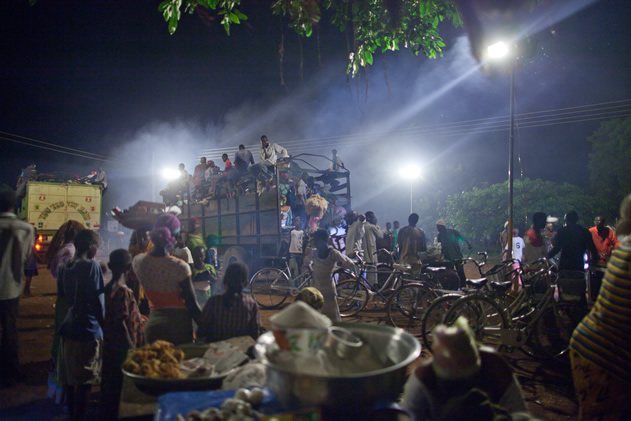The following blog post was written by Stephanie Cohn, Philips Color Kinetics.
Imagine a future where our homes, businesses, and cities are powered completely by the most abundant and unlimited energy resource on earth: the sun. Harry Verhaar, the Philips Lighting Head of Global Public and Government Affairs, is doing just that by creating a blueprint for a future lit by solar-powered, energy-efficient lights. In 2003, Verhaar started the global initiative to phase out inefficient lighting technology in favor of LED lights and has since led Philips to become a world leader in the solar-LED market. With the recent release of PHILIPS NEW LINE OF CONSUMER SOLAR-LED LUMINAIRES, we spoke with Verhaar about the future of solar light and how Philips is playing a role in such an important endeavor.
 |
|
(All photos courtesy of Philips) |
In what ways have you led global initiative to phase out old lighting technology in exchange for LED technology?
The strategy we’ve used has mainly been working with environmental legislation around the world. For example, we were able to add our initiative to the European Union’s 20/20/20 climate agreement in 2007. This pact aims for the EU to reduce greenhouse gas emissions by 20%, produce 20% of their energy from renewable resources, and improve energy efficiency by 20%, all by 2020. Later that year, the phase out of inefficient lights was also included in the Energy Independence and Security Act in the United States.
I also co-founded en.lighten Public-Private Partnership, which runs under the UNITED NATIONS ENVIRONMENT PROGRAMME (UNEP). This program aims to support socio-economic development in emerging and developing countries by making the transition to efficient lighting. Today 66 countries in Latin America, Africa, the Middle East, and Asia have partnered with the program and are committed to this goal.
How is Philips working with governments who want to transition to solar-powered lighting systems?
To help local governments implement solar-LED projects, we provide assistance by sharing performance characteristics, proposals for project designs, economic analysis, and financing options. In addition to working directly with various governments, we have also partnered with organizations, such as THE CLIMATE GROUP andREGIONS20 that help states and regions employ energy-efficient solutions, including solar-LED lighting.
What are Community Light Centers and how did Philips come up with the idea?
The idea came about five years ago. We noticed many companies were already focusing on bringing solar lanterns to individual families living in regions off the electrical grid. We also wanted to accomplish this while at the same time taking an additional approach that would use light to bring communities together. Community Light Centers are places where communities can accelerate their socio-economic development by using solar energy to extend daylight hours. This gives more time for commerce, health care, education, and social interactions. By the end of 2015 there will 140 light centers in Africa, surpassing the original goal of opening 100 centers by the end of the year.
What is Philips doing to fight light poverty in conjunction with the International Year of Light?
In addition to developing more COMMUNITY LIGHT CENTERS, we are creating a larger and more competitive portfolio of consumer solar-LED solutions so dangerous kerosene lamps are no longer necessary in rural communities. Currently we are also developing quality standards, policy frameworks, business models, and financial solutions for solar-LED projects. Throughout the INTERNATIONAL YEAR OF LIGHT we are organizing roundtable discussions with government and business stakeholders to address the eradication of light poverty from both an urban and rural perspective.
Philips has recently released its LifeLight line of solar-LED luminaires. What makes this product so innovative to the market?
Using LED and solar technology, LifeLight allows for bright illumination that lasts 10 ‒ 40 hours and is 100% energy efficient, all within a robust lamp, which includes USB ports for charging phones. PHILIPS LIFELIGHT PRODUCTSprovide an affordable and safe alternative to dangerous kerosene lamps, which many families without access to electricity typically use.
What do you see for the future of solar lighting and sustainable energy?
A century ago, addressing the basic needs for lighting was our priority. Now we have the technology to not only cover these needs, but to do so in a smart way. Solar-LED lighting will help expand our economy and save on energy and electricity costs. It will provide widespread access to light in places currently without this simple necessity. Overall, the transition to solar-LED lighting is a huge step toward a brighter future, and as countries around the globe work to phase out inefficient lighting, it is clear we are on the right path toward that future.
With advancements in technology, government initiatives, and community support, it’s no longer a stretch to imagine a world lit by solar-LED lights. The future is bright and Philips hopes to help every step of the way.
Learn more about PHILIPS SOLAR-POWERED LED LIGHTING SYSTEMS















